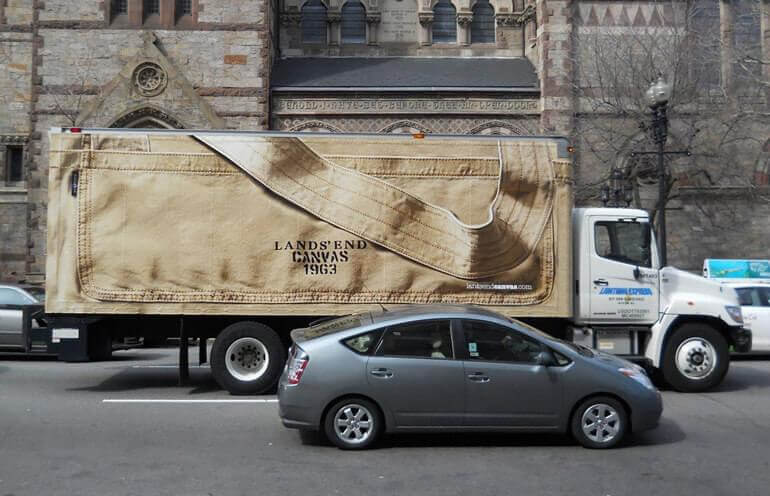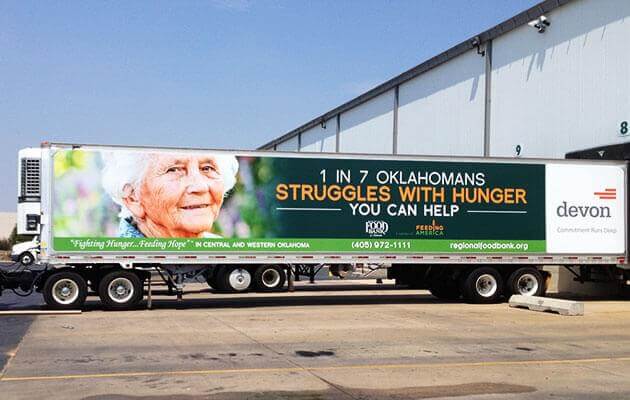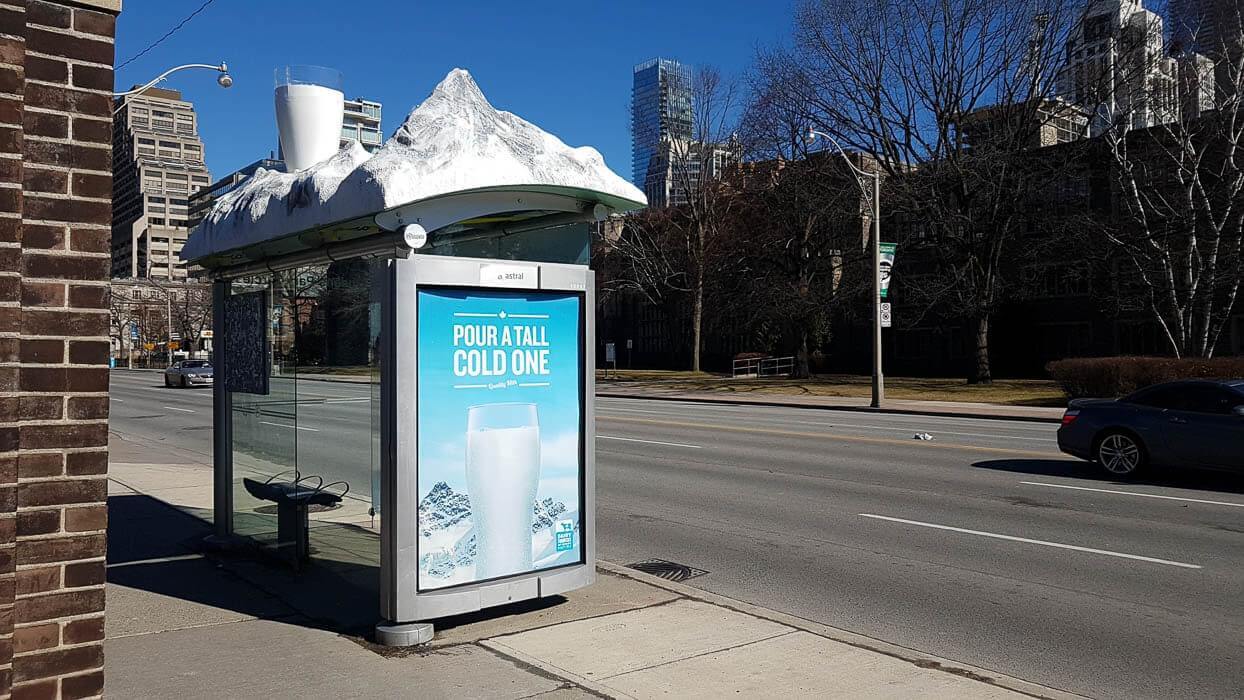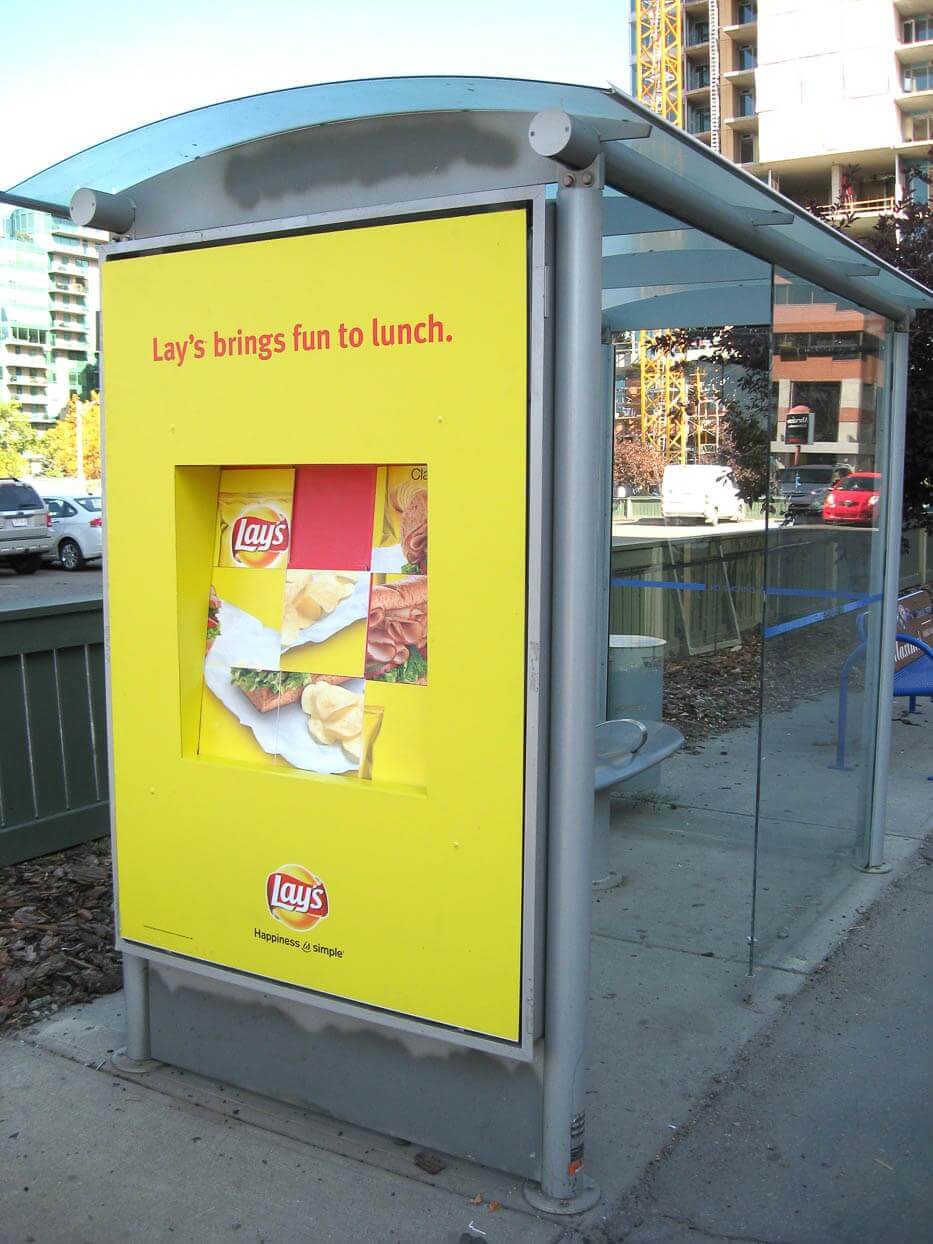
There are plenty of ways to go about beginning your outdoor advertising spree. Different mediums have different advantages for different demographics. Truckside advertising, typically, targets a wide range of people on the move, as most onlookers will be in a mobile vehicle to meet the same action of the mobile billboard. Transit shelter advertising (or TSA) will target a lot of people, as well, however the impact will be more stationary and the influence will take place in one spot. TSA’s can’t move around like trucks do, obviously, so the reach might be a tad limited. However, plenty of commuters on transit and drivers/passengers passing by in their vehicles can, without a doubt, notice impressive transit shelter ads. This post will examine the advantages and disadvantages of these advertising mediums to find out which can fit best into a marketing plan, depending on the product.

Truckside Advertising Advantages
Mobile billboards have endless strengths, as they are able to deliver valuable advertising messages across a lot of land in a day. They are able to appear in many places that a consumer resides or plays in, and can specifically target certain heads depending on geographic location and keen interests. They provide extensive coverage on a high format basis. Truckside advertising is highly repetitive as well, as moving billboards have the ability to cover similar areas in a set period of time. This can lead to high retention rates among onlooking consumers. The cost per impression is very low when choosing to advertise with truck side billboards. According to the Outdoor Advertising Association of America (OAAA), the cost per thousand impressions (CPM) of a vehicle wrap is only $0.77. This is a high advantage because it gives a client back more than is spent.

Truckside Advertising Disadvantages
Due to the nature of vehicles being constantly on-the-go, people may not be able to catch the advertising message as quickly as, say, they would when waiting for transit at a transit shelter. Because cars zip by other cars when they’re on the road, drivers and passengers alike may miss the advertised message on the trucks. This doesn’t, however, take into consideration how vehicles can be at a standstill on the roads due to traffic or waiting at a traffic light. In those cases, the truckside ad will prove to be easier to retain. Also if there are any changes that need to be made in the actual vinyl of the truckside billboard, then there will be an added replacement cost.

TSA Advantages
Transit shelter advertising has the power to be as freely creative as possible given the physical limitations of the shelter. Take the picture above, for example, which advertises a cold glass of milk on the poster on the side but uses the top of the shelter to situate 3D imagery to further drive the point of the product home. Bus shelters can also include a scrolling screen to display digital ads. The panels around and inside the bus shelter provide ultimate ad space that alerts both people passing by and people waiting inside. People gather around transit shelters when they’re waiting for transit, and usually for long periods of time depending on the season, so transit shelter advertising is prime time for consumers to be invested in an advertisement. As well as this, transit shelter ads have 24 hour visibility. People can see TSA’s no matter the time of day, which can influence their buying behavior.

TSA Disadvantages
Some disadvantages that one may find when choosing to advertise on transit shelters is that copy and creative can be limited. Because of the smaller billboard panel space provided in the shelters, the advertising campaign may not be as broadly displayed as the client would like. Also, not every person viewing the transit shelter ad is a potential consumer. Because of the ad’s placement geographically, which is usually ruled by the transit authorities, the target consumer may not be reached as well as when using a specific route on truck side advertising.
As you can see, both truckside advertising and transit shelter advertising have their primary advantages and their unfortunate disadvantages. Depending on the visual impact of a campaign, an advertiser and client may choose to display their ad on a larger scale, like the sides and rear of a truck for maximum glances. If the campaign isn’t so mighty, and is more so meant to reinstate a product’s presence, then TSA could be a better option. Whatever the choice, both mediums allow for great coverage and flexibility in creativity.


